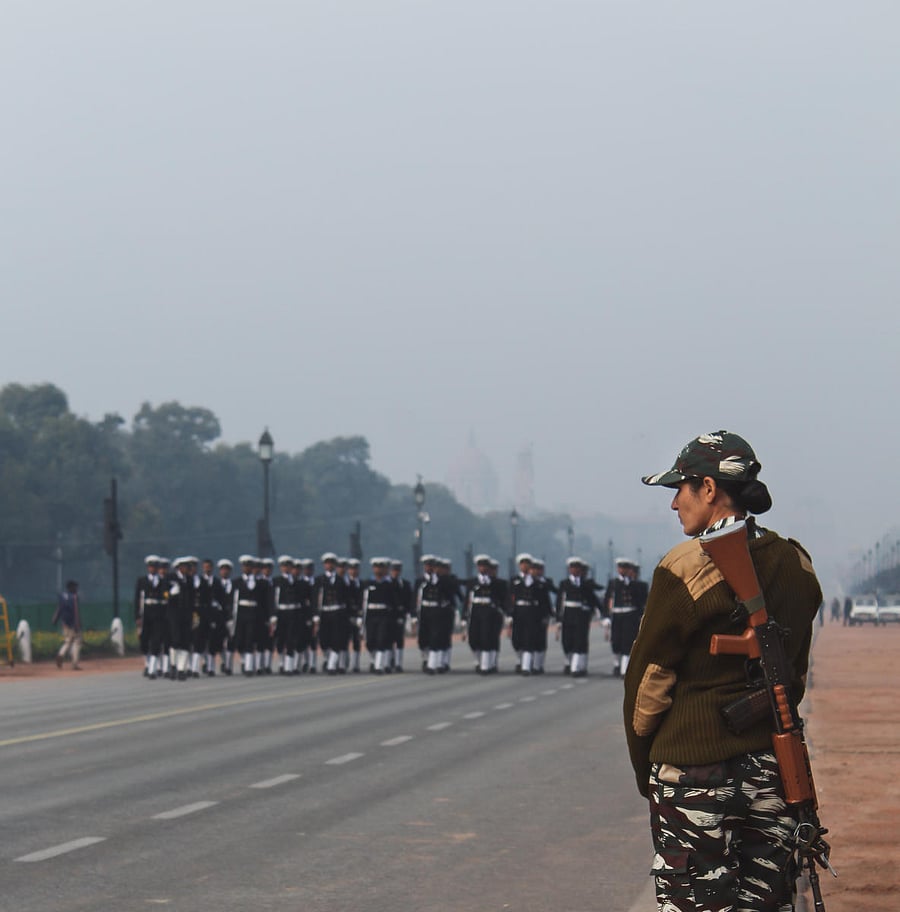

Women have been steadily chipping away at the bastions that were fiercely protected by men. From launching rockets to space travel, they are breaking barriers and shattering the glass ceiling. They had stormed every profession, including the armed forces, and proved themselves to be as good as their male counterparts. Yet, it has not been an easy task, especially for the women serving in the armed forces. Army by tradition is a conservative and male-dominated organisation where acceptance of women as army officers took time. While some of the male officers and men were derisive and hostile, others turned out to be tolerant or dismissive. It was a slow and laborious process for the women officers, who had to compete physically, emotionally and mentally, to gain respect from the soldiers they hoped to lead into war someday.
A look at the global statistics reveals that India has been slow in inducting women into the armed forces, and slower in granting them a permanent commission, which they have been demanding for a long time. Women have served the Indian Army in the medical corps for a very long time, but it was only in 1992 that they were commissioned in non-medical roles as short service officers. The long-standing demand for a permanent commission was granted last year after the Supreme Court of India ruled that women officers should be granted permanent commission (PC), adding that they will also be eligible for command postings.
The demand for inclusion into combat roles in the Indian Army has yet to be fulfilled. A discussion about their induction into combat units is enough to open the Pandora’s box. It never fails to evoke passionate arguments. Those against the idea argue that the Army is not like other professions where women don’t have to indulge in a hand-to-hand fight with the enemy. Right from physical, cultural, and social to emotional, the arguments offered against the demand are many. Some of them may be valid, but most result from a patriarchal mindset.
One of the commonest arguments is that a majority of the Indian Army soldiers come from a rural background and are not likely to respect or acknowledge women as their leader in the combat zone. While that may be partly true, there have been women doctors and nurses who have successfully served in war zones all over the world.
Although the Indian Air Force now has fighter pilots, and the Indian Navy has allowed women pilots to fly the P-8I maritime patrol aircraft, which is a combat platform, the Indian Army has been dragging its feet to place its women officers in combat roles. A ray of light, though, can be detected in a step taken by the Army Aviation Corps, which had assigned only ground duties to its women officers, but has recently selected two women officers to undergo training as helicopter pilots at Combat Army Aviation Training School at Nasik.
One could argue that the induction of women in combat is in its nascent stage, with very few armies in the world recruiting women in the fighting arms, but there is an increasing acceptance of the idea.
The Israel Defense Forces have mandatory military service requirements for women. Women have taken part in Israel’s military since 1948 when the state was founded, due to circumstances threatening its existence.
They served the Army, Navy, and the Air Force in combat roles and hundreds have laid down their lives in actual combat. Israel Military Service law states that Canada allowed women in combat roles way back in 1989. The Australian military did so in 2013. On January 24, 2013, the USA removed the military’s ban on women serving in combat. The United Kingdom lifted all restrictions in 2016. Finland does not restrict its women officers from combat arms. Germany opened all combat units to women and so did France, where women comprise nearly one-fifth of its military.
If women want to shatter the glass ceiling in the armed forces, they must be prepared to forego the concessions in physical standards during recruitment, and in battle, physical efficiency tests, and be ready to compete on an equal footing with their male counterparts because they wouldn’t be facing women enemies on the borders.
Till those become a reality, we can only dream of having a unit like Jegertroppen (Hunter Troop), which is a part of Norway’s FSK (Special Operations Commando unit), and an exemplary example of women’s empowerment.
(The author has just published The Girls in Green with Bloomsbury.)